This post may contain affiliate links. Please read my privacy policy.
This easy homemade condensed milk bread recipe yields incredibly soft, fluffy, sweet, and milky bread that you can't stop eating. The recipe is fail-proof and novice baker friendly! I recommend this easy recipe even if you are not familiar with yeast bread. While it is sweet on its own, it can always be served with jam.
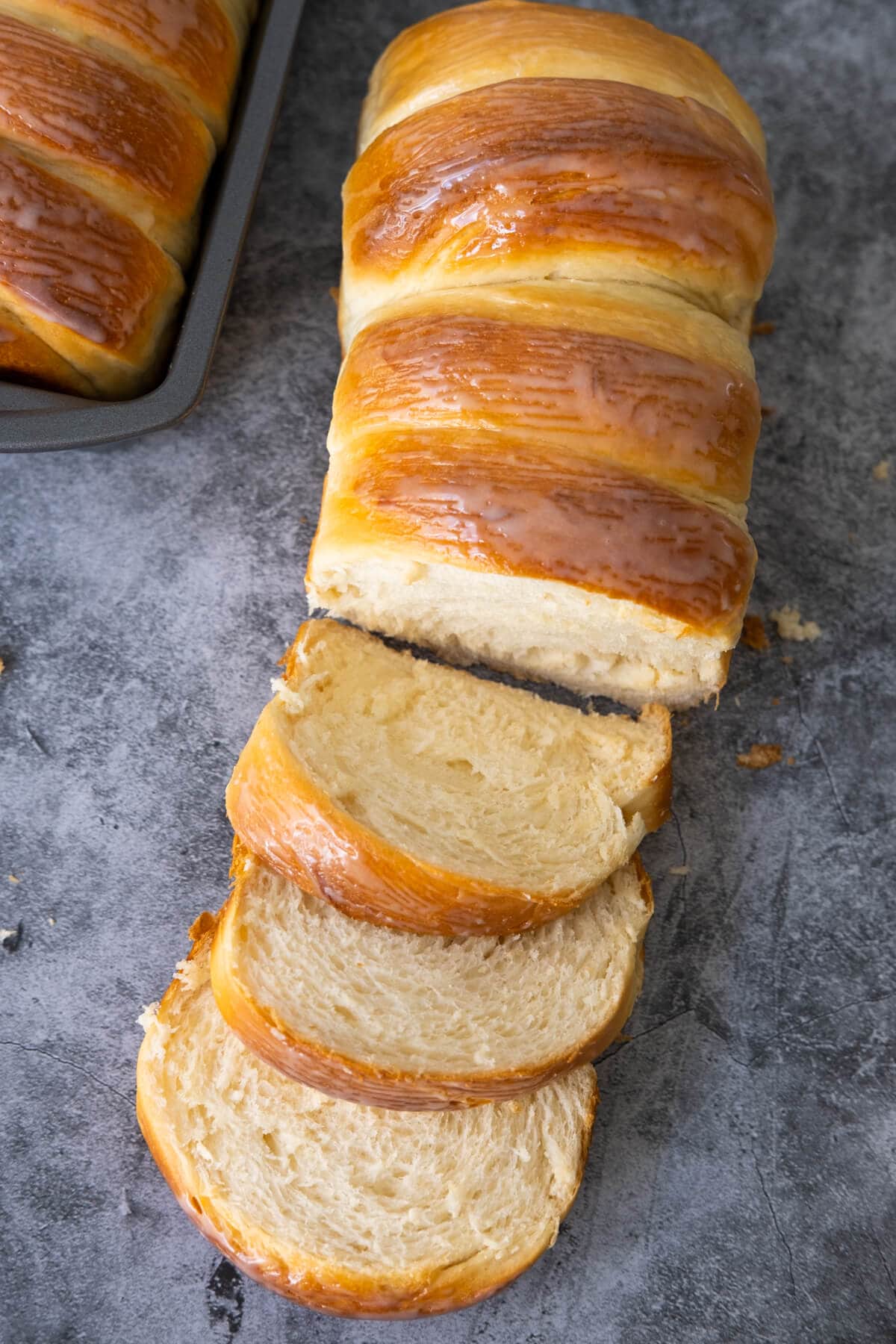
Condensed Milk Bread Recipe
Condensed milk bread is a quick and easy homemade bread recipe made with simple ingredients. This sweetened condensed milk bread is extremely fluffy, soft, and moist, which tastes stunning with an extra milky glaze dripping down from the top. This dessert bread would be complemented well with a steaming cup of black coffee.
This easy condensed milk bread also makes a delicious sandwich from each soft, fluffy, and sweet slice. Try this step-by-step milky bread recipe today; it will become your next favorite bread to make for breakfast.
Condensed Milk Bread Ingredients
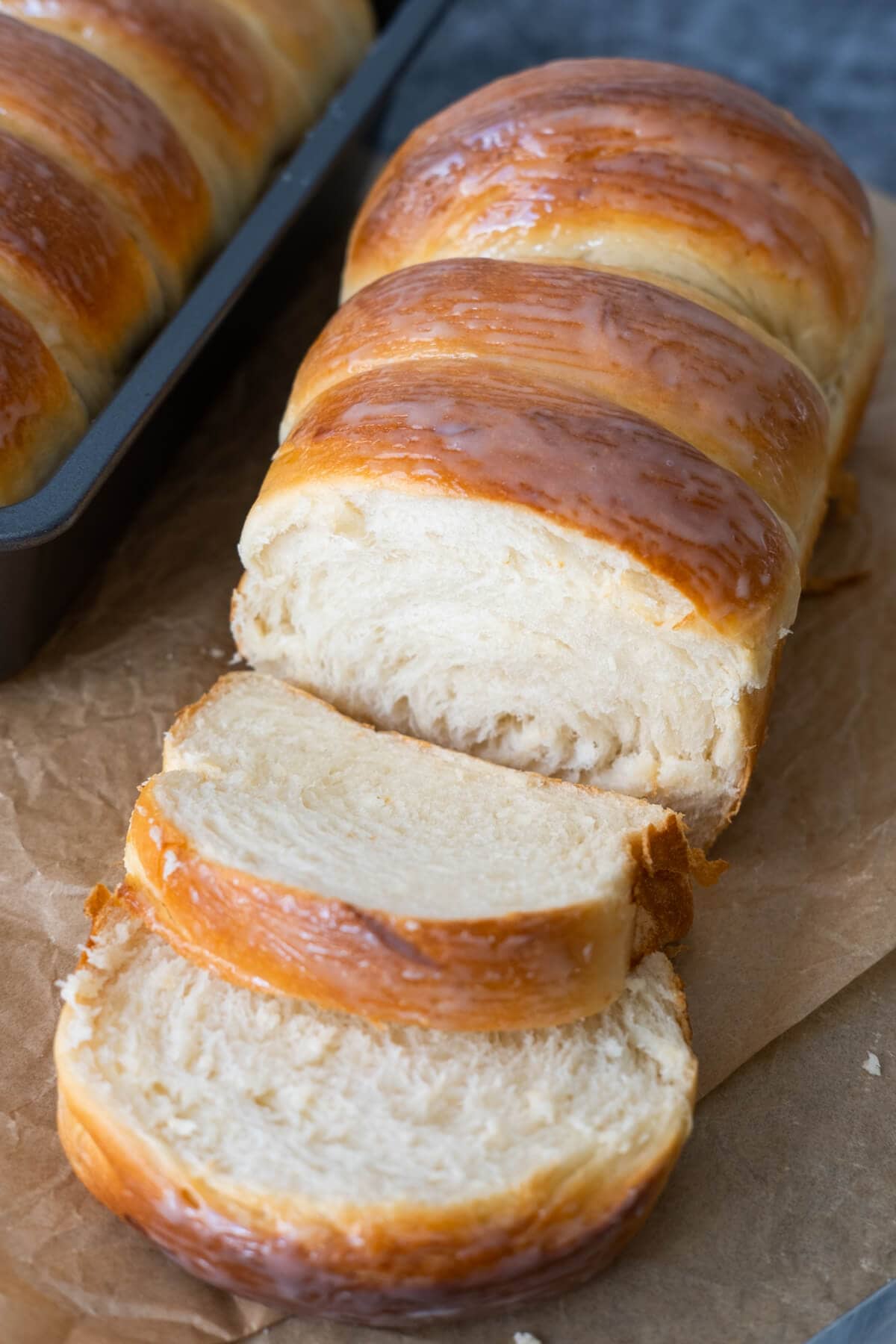
The bread dough calls for the following ingredients:
- All-purpose flour
- Active dry yeast
- Salt
- Milk
- Condensed milk
- Egg
- Unsalted butter
The silky condensed milk glaze needs only two elements:
- Condensed milk
- Unsalted butter
See the recipe card for full information on ingredients.
How To Make Condensed Milk Bread
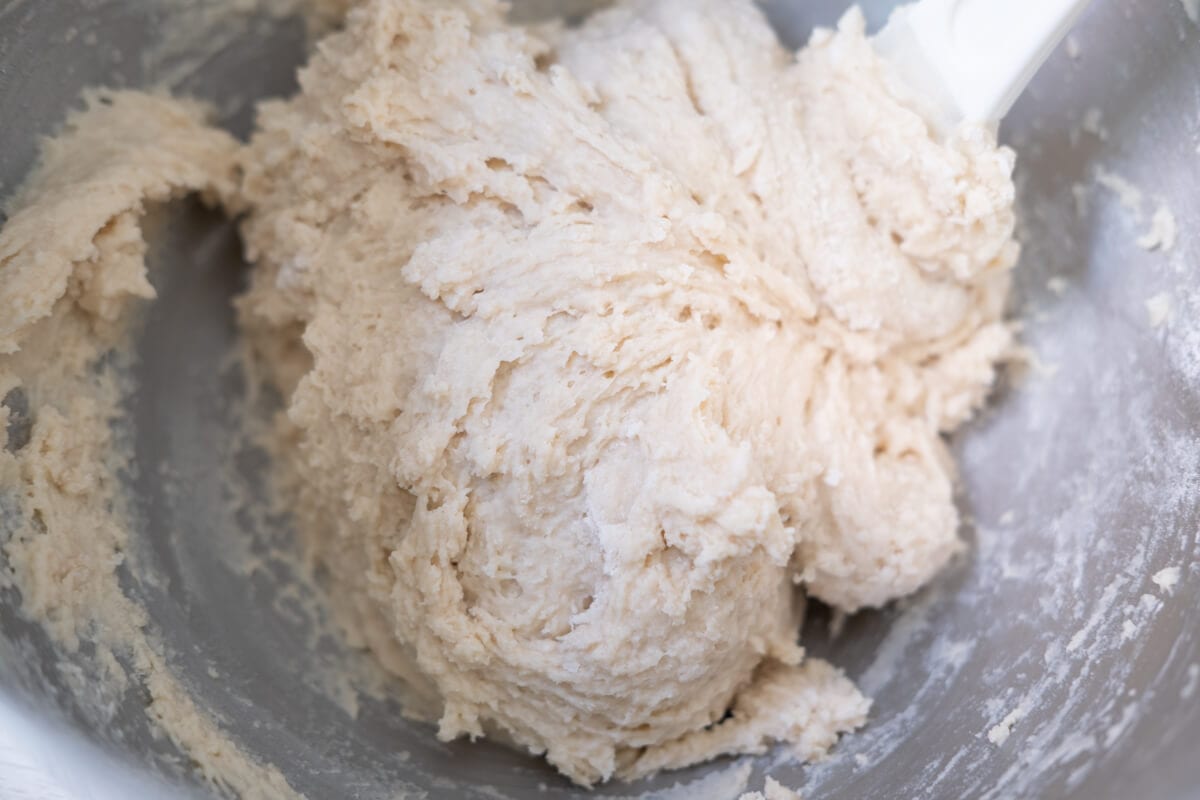
Let’s prepare the bread dough by adding all the wet and dry ingredients to a bowl except the butter. Combine well into a dough with a spatula, then rub in the butter.
Transfer the dough to a floured surface, and knead the dough constantly until smooth and elastic.
Next, proof the dough for an hour, covered with plastic wrap, until doubled in size.
Gently press the dough to release the air and divide it into two equal portions.
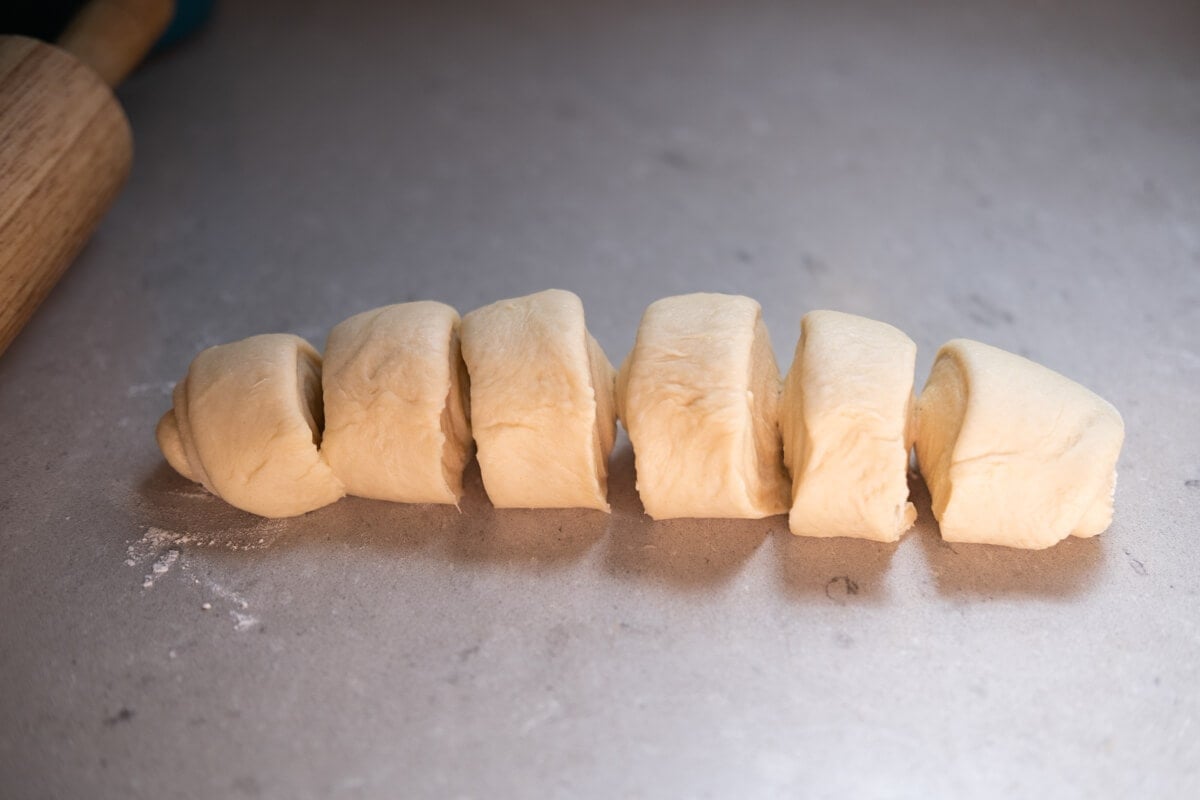
Flatten and shape the dough into a 16 x 8-inch rectangle, then roll it up and pinch the seam to seal. Place the seam against the counter, and cut the dough into equal pieces, like making cinnamon rolls.
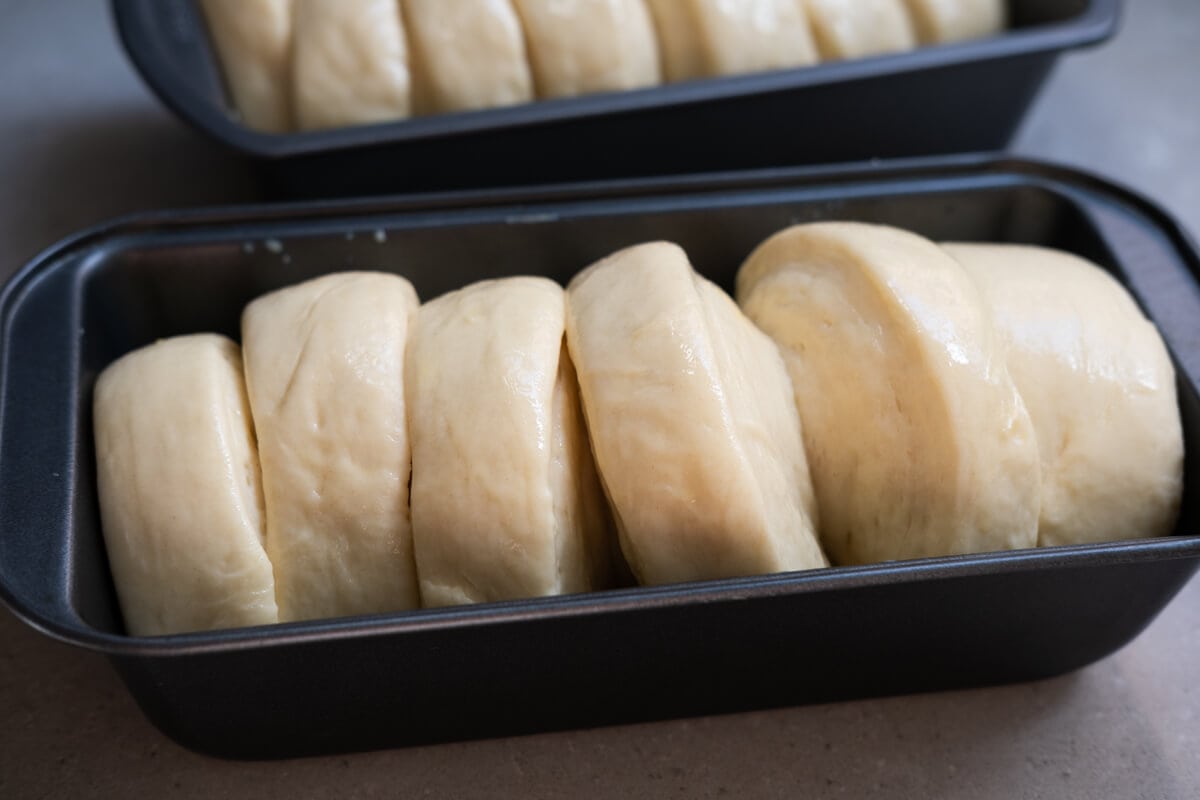
Arrange the dough to a baking loaf pan, and cover it lightly with plastic wrap. Let the dough rise in a warm area for 45 minutes, or until nearly doubled.
Brush the bread with egg wash before baking.
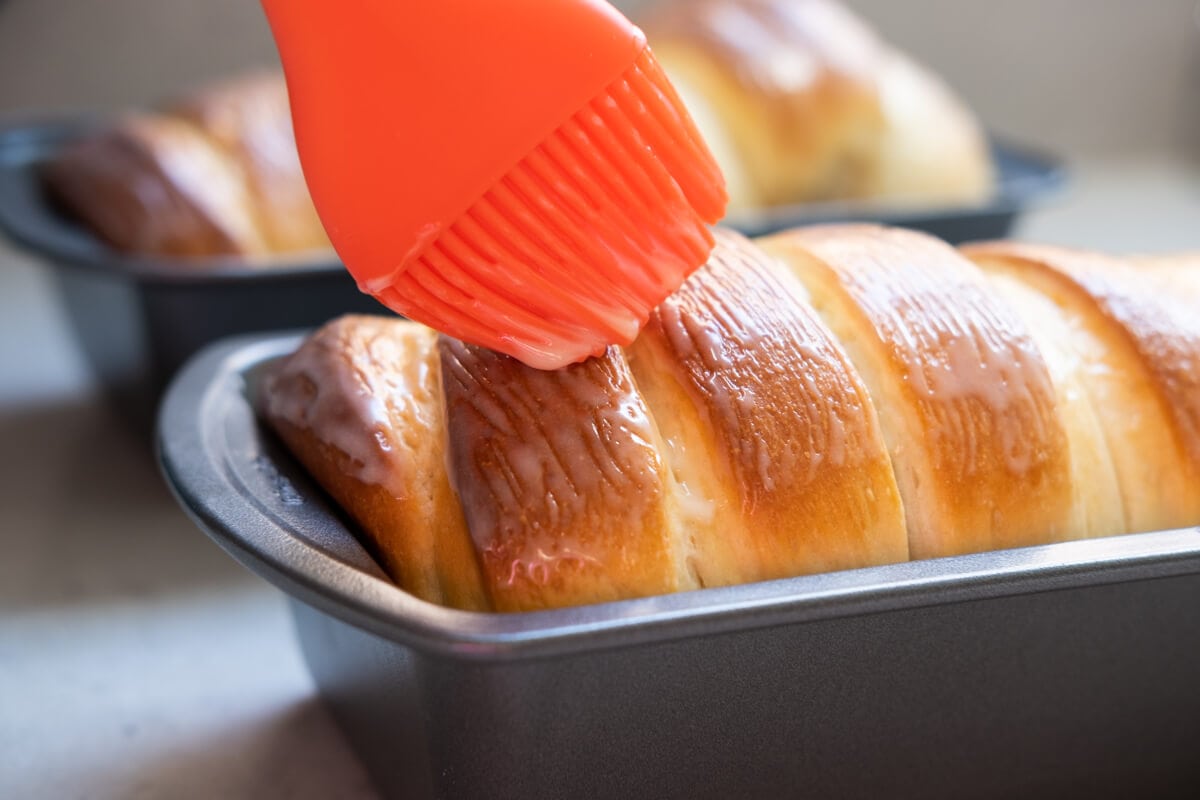
Finally, prepare the condensed milk glaze by whisking the softened butter with condensed milk in a bowl. Brush the bread with the milk glaze as soon as you take it out of the oven, and serve it warm or room temperature.
Baking Tips
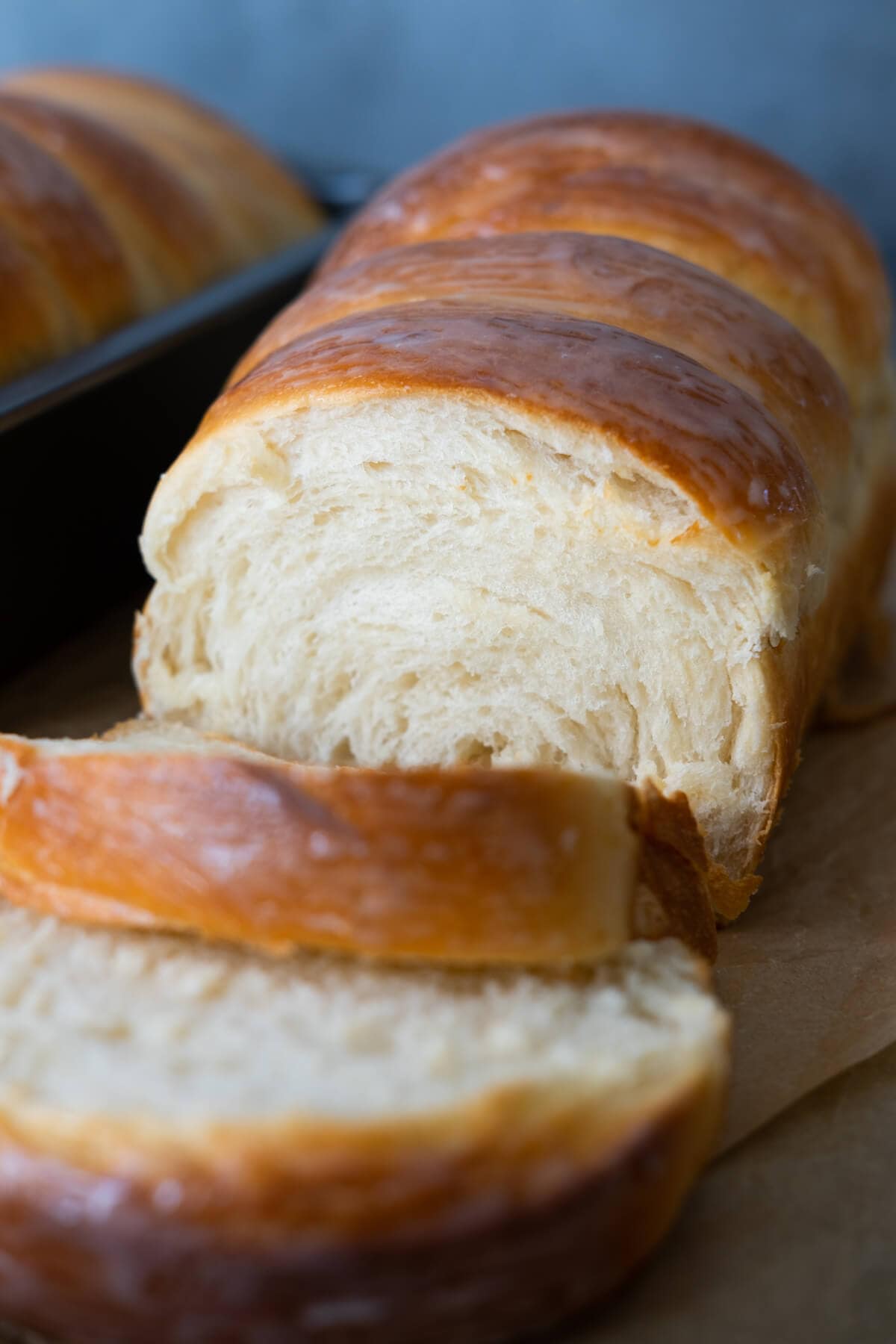
As you can see, I omitted sugar in the bread dough ingredients since the bread is sweet enough with the condensed milk. However, if you prefer an intense taste, you can combine the ingredients with two tablespoons of sugar during the mixing.
It is more efficient to use the softened butter to combine with the dough.
Use warm milk to activate the yeast, which helps to reduce the proofing time.
Have some aluminum foil ready to cover the bread during the last 10 minutes of baking if it starts to brown too quickly.
Frequently Asked Questions
I recommend using only condensed milk in this bread recipe to keep the bread soft and have a caramelized taste.
Store the bread in an airtight plastic bag or container at room temperature for up to 3 days. You can also refrigerate the bread to keep it fresh longer.
This recipe is 125 calories per slice when each loaf is cut into 12 slices.
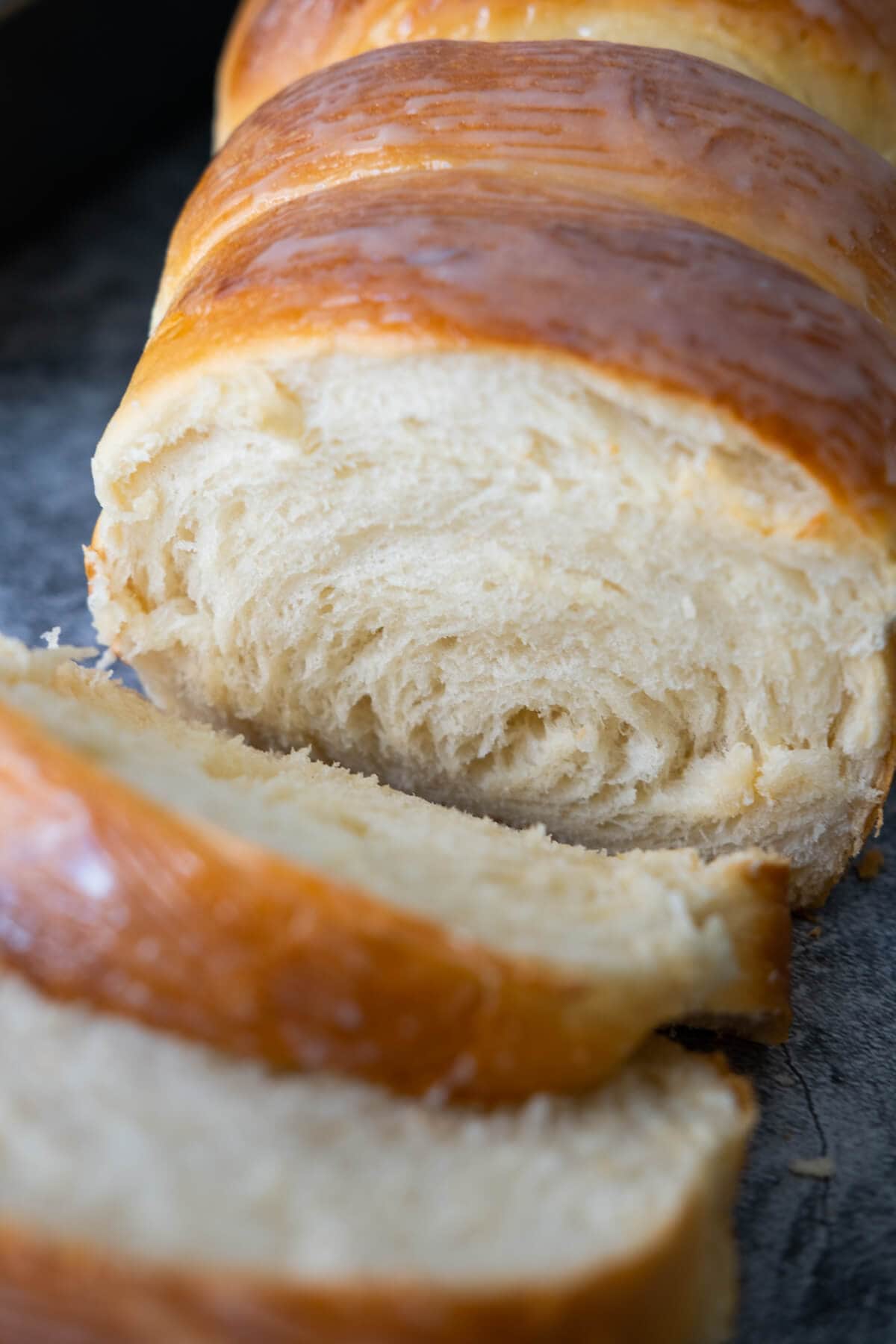
What To Serve With Condensed Milk Bread
Serve this bread as-is or with jam. I recommend the following jam recipes and compound butter:
I hope you enjoy this post as much as I do. If you try my recipe, please leave a comment and consider giving it a 5-star rating. For more easy and delicious recipes, explore my Recipe Index, and stay updated by subscribing to my newsletter and following me on Facebook, Pinterest, and Instagram for new updates.
Other Bread Recipes You Might Like

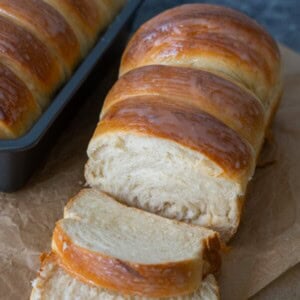
Condensed Milk Bread
Ingredients
- 1 tablespoon active dry yeast
- 1/2 teaspoon salt
- 1 cup milk, room temperature
- 1/2 cup sweetened condensed milk
- 1 egg
- 3.5 cups all-purpose flour
- 1/4 cup unsalted butter, softened
Egg wash
- 2 teaspoons egg yolk
- 1 tablespoon milk
Condensed milk glaze
- 3 tablespoons condensed milk
- 1 tablespoon unsalted butter, softened
Instructions
- Soften the butter at room temperature. In a large mixing bowl, whisk together the milk, condensed milk, egg, salt, and yeast. Sift the all-purpose flour into the same bowl and mix with a spatula until combined. Continue mixing and folding the dough until the ingredients are fully incorporated. Add the softened butter to the dough and mix thoroughly until well combined.
- Transfer the dough to a floured surface and knead it by hand for 15 to 20 minutes, until smooth. If the dough becomes too sticky to knead, set aside one tablespoon of all-purpose flour and sprinkle it over the dough as needed.
- Place the dough in a buttered bowl and cover it with a cloth or plastic wrap. Let the dough proof in a warm area for 1 hour, or until it has doubled in size. (I usually leave the dough in the microwave with a cup of hot water next to it, which helps reduce the proofing time.)
- After the first proofing, transfer the dough to a floured surface and gently press to release the air. Divide the dough into two equal portions. Flatten and shape each portion into a 16 x 8-inch (40 x 20 cm) rectangle, then roll it up and pinch the seam to seal. Place the seam side down and cut the dough into equal pieces with a knife, similar to making cinnamon rolls.
- Line the cut dough pieces in a loaf pan and cover them lightly with plastic wrap. Let the dough rise in a warm area for 45 minutes. Repeat this step with the second loaf. Once the loaves have doubled in size, brush them with an egg wash.
- Preheat the oven to 180°C (356°F) and bake the loaves for 22 minutes, or until golden brown. Meanwhile, prepare the glaze by combining the condensed milk with softened butter in a small bowl. Whisk until well combined and set aside.
- After baking, remove the bread from the loaf pan immediately. Brush the bread with the condensed milk glaze and serve warm or at room temperature.
Video
Notes
Nutrition
Nutrition information is automatically calculated, so should only be used as an approximation.
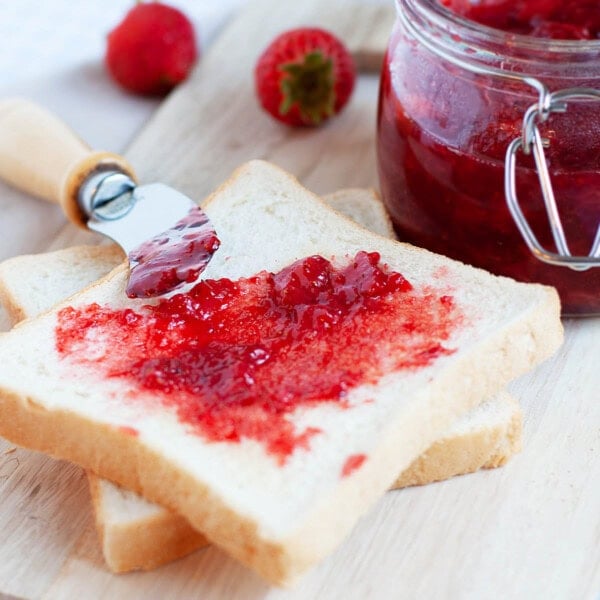
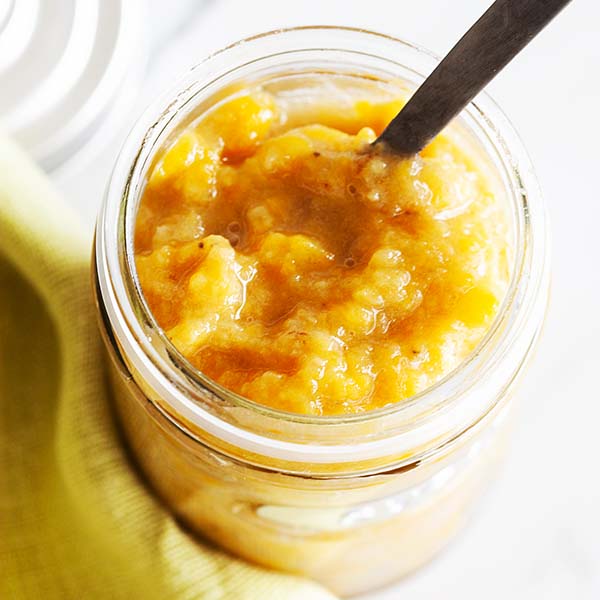
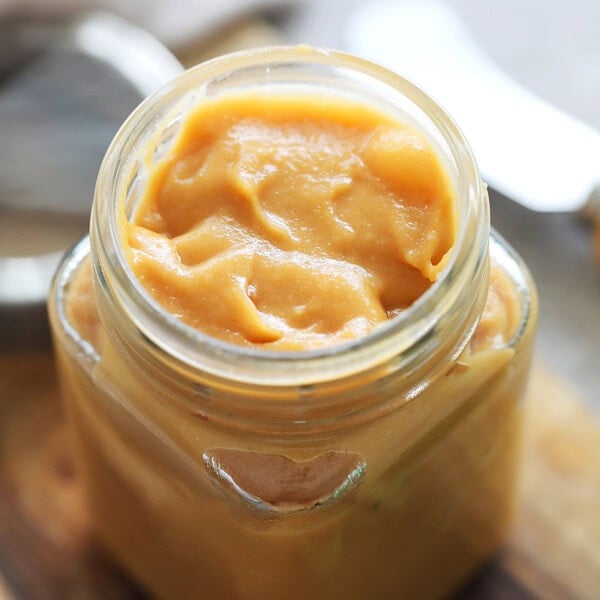
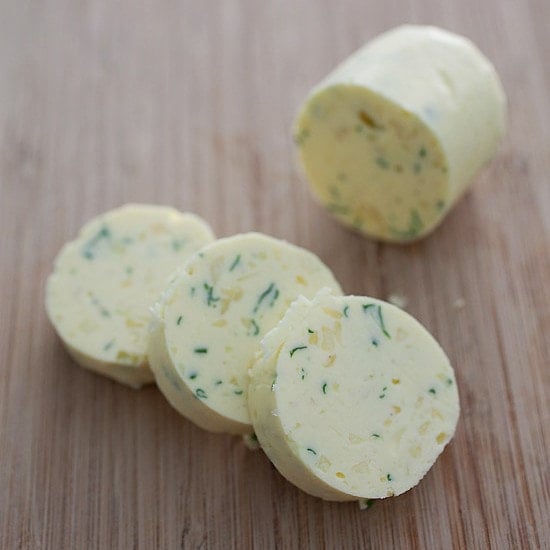






Could I leave the dough to rise overnight?
Yes, you can leave it to rise overnight in the refrigerator. Refer to the recipe – after step no. 3, you can refrigerate the dough, and continue with the next process the next day.
It’s a good recipe, we love it.The comments, wow, use some common sense! Some of these people sound too stupid to be using the oven, LOL
Hi!
Do I have to knead for 15-20 minutes if I’m using my mixer with dough hook?
Thank you!
Hi Tanya, if using a stand mixer with dough hook, you only need to knead for 10-12 minutes.
Hi, how much instant yeast to use please? I don’t hv active instant yeast.
Hi Grace. You can use the same amount of instant yeast, in place of active dry yeast.
Can the second loaf be frozen after the second proofing?
Yes, suggest before 2nd proof if you can, but can be frozen after the 2nd.
Great! Came out perfectly. Very fluffy
Can you use bread flour instead?
You can, it just may be dry, so water may need to be added.
I made this and I used bread flour. It came out perfect. So delicious. Not dry.
Can you use a stand mixer with a hook attachment rather than knead for so long by hand?
Yes, that is no problem.
I do not see anywhere the size of bread pan to be used. I have 8×4″, 9×5″ I have large and small pullman pans. Which would be best?tysm
I would use the 8×4 mostly, but the 9×5 is great as well. Makes roughly the same, but baking time may have slight difference.
Can you replace AP flour for bread flour?
You can try but I can’t guarantee results if you change ingredients.